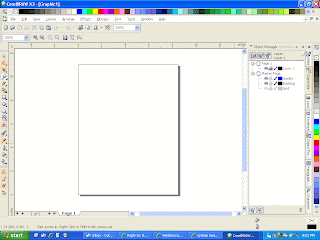In order to create an effective, attractive and successful media product it was important and essential to utilise various types of technology to achieve these credentials. Prior to even the creation phase of the task, technology also played a vital part in research the codes and conventions of trailers, as well as enabling us to gain knowledge on our inspirations, and what made them effective.
When researching our task, nothing played a bigger role than that of the internet, which gave us the ability to search for already existing trailers, posters and magazine covers, so we had a more accurate idea of what we would have to do to assemble these successfully, retaining the standard codes and conventions of similar media products. We took advantage of the video streaming website “Youtube” in order to view the trailers of our films inspiration, by doing this we provided our self with a basic plan as to what our trailer should be like. This site also gave us the opportunity to view previous years work, which presented us with a better idea what our capabilities would be when we ourselves reached the filming stage of our project, this also enabled us to take note of any successful elements from these trailers, so that we could exploit them within our own trailer. In conjunction to youtube, we also used basic image searches and the IMBD website so we could view and perform analysis upon our trailers influences film posters, and any magazines that they may of featured in, such as the “Trainspotting” exclusive in Empire magazine.
By viewing these images we were granted a better perspective of what conventions, and how each of these conventions would be manipulated to attract their target audience, which we had by then identified to be a similar, if not the same target audience.
Once the research stage had been completed it was time to begin filming the trailer itself, and for this, the most important piece of equipment was the camera, as without it we would not have been able to film any footage whatsoever. We were however provided with a somewhat basic video camera, which had no serious functioning other than being able to record footage onto a flash memory card. This meant that we could only record in well lit areas, due to the cameras flash being obsolete, which ultimately had an effect on our “mugging” scene, which was a poor quality clip due to the lack of light. Despite this however, the camera was able to successfully record all the other clips, capturing displays of high emotion when necessary and retaining a good enough quality do each clip can be viewed and furthermore used within the construction of our trailer. In conjunction with the camera we also employed a camera stand, which enabled us to capture a steady shot that may not have been possible if the camera was being used in hand held format. When all the required footage had been captured it was essential that we copied this footage onto a computer so we could begin to edit the footage. Luckily we were able to use a computer which already had a flash memory card slot installed, so all that was required was for the card to be inserted, so the files could be saved onto the computers memory.
Once the clips had all been the next element of technology we used was the editing software “Sony Vegas”. With this we were able to cut the clips down to suitable length and combine them together to create a smooth running trailer. We also took advantage of this software’s capabilities to saturate the colour of one clip, leaving it black and white, so it could easily be indentified as the past. The final function of “sony vegas” we employed was to introduce a soundtrack to the trailer, which had been chosen after searching on the technological presence of the internet.
Once the clips had all been the next element of technology we used was the editing software “Sony Vegas”. With this we were able to cut the clips down to suitable length and combine them together to create a smooth running trailer. We also took advantage of this software’s capabilities to saturate the colour of one clip, leaving it black and white, so it could easily be indentified as the past. The final function of “sony vegas” we employed was to introduce a soundtrack to the trailer, which had been chosen after searching on the technological presence of the internet.
Now the trailer had been complete, we were left with the task of creating a film poster, as well as a magazine cover, featuring our film, to do this i utilised the capabilities of the software program “Corel Draw”, as this program gives you the ability to crop photos and place them anywhere on the designated sheet, as well as being able to insert a variety of text fonts, anywhere that they are required. This was particularly useful when creating the magazine cover, as a standard fim poster would retain a fair amount of information on the front, which would not all be relevant to the feature article, so by using corel i could effectively lay the foundations out, and then add varying aspects and details where required.





No comments:
Post a Comment